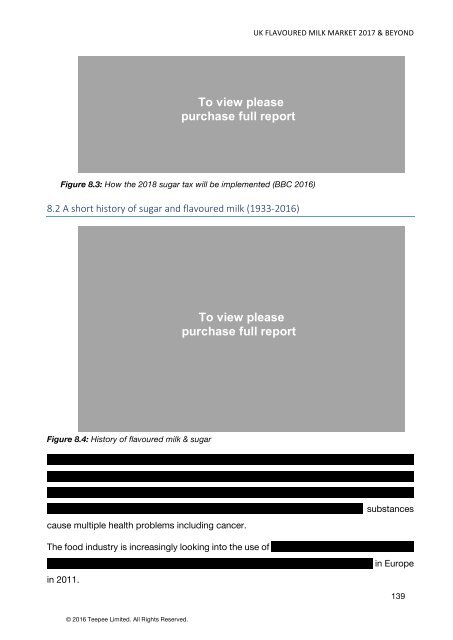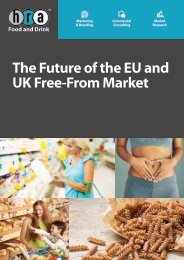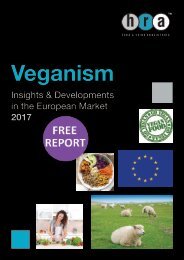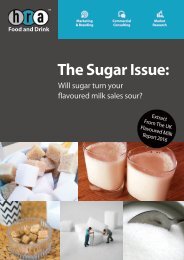Flavoured_Milk_Free
The backdrop to the UK flavoured milk market is one of relentless change. The removal of the EU milk quotas, the transition by emerging economies to a Western-style diet, the upcoming introduction of the ‘sugar tax’ and the booming sports nutrition industry are all aspects of change that create both challenges and opportunities for the UK flavoured milk market. HRA Food and Drink has developed this report as a map to guide industry stakeholders. Although volume growth in 2014 was slightly lower than in previous years, the flavoured milk market still has plenty of room for product innovation in the future.
The backdrop to the UK flavoured milk market is one of relentless change. The removal of the EU milk quotas, the transition by emerging economies to a Western-style diet, the upcoming introduction of the ‘sugar tax’ and the booming sports nutrition industry are all aspects of change that create both challenges and opportunities for the UK flavoured milk market.
HRA Food and Drink has developed this report as a map to guide industry stakeholders. Although volume growth in 2014 was slightly lower than in previous years, the flavoured milk market still has plenty of room for product innovation in the future.
You also want an ePaper? Increase the reach of your titles
YUMPU automatically turns print PDFs into web optimized ePapers that Google loves.
UK FLAVOURED MILK MARKET 2017 & BEYOND<br />
How will the sugar tax work?<br />
• Companies will be taxed on the sugary drinks they manufacture<br />
To view please<br />
purchase full report<br />
• There are two tax brackets, depending on the drinks sugar level.<br />
• Drinks containing sugar above 5g/ 100ml will be levied at 18p/l<br />
• Drinks containing sugar above 8g/ 100ml will be levied at 24p/l<br />
Fruit juice and milk-based drinks are exempt from the tax<br />
Figure 8.3: How the 2018 sugar tax will be implemented (BBC 2016)<br />
8.2 A short history of sugar and flavoured milk (1933-2016)<br />
To view please<br />
purchase full report<br />
Figure 8.4: History of flavoured milk & sugar<br />
The questioning of the role of sugar can be traced back to John Yudkin’s seminal 1972<br />
book, “Pure, Whole and Deadly.” This led to the introduction of artificial sweeteners such<br />
aspartame in 1982 and saccharine in 1995, billed as the healthier alternative to sugar. More<br />
recently this has been questioned, with unsubstantiated reports that these substances<br />
cause multiple health problems including cancer.<br />
The food industry is increasingly looking into the use of natural sweeteners including stevia<br />
syrup, derived from a shrub indigenous to America, which was approved for use in Europe<br />
in 2011.<br />
139<br />
© 2016 Teepee Limited. All Rights Reserved.







